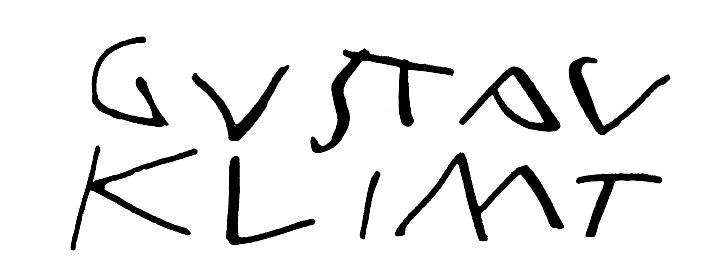Gustav KLIMT
1862-1918
Any questions?
contact@mr-expert.com
Do you have a piece by Gustav Klimt in your possession and would like to know its value? Our Experts will carry out a free appraisal of your piece, provide you with an estimate of the market price, and then help you to sell at the best possible price.
Quote, price and estimation of the artist Gustav Klimt
Price of a painting by Klimt: 5,000 – 50,000 000 € €
Artist’s status for a print or an engraving: 60 – 2,000 €.
Estimate of a drawing or watercolour by the artist for auction: 500 – 400,000 €.
Price of a photograph by G. Klimpt: 200 – 5,000 €.
If you would like to have a painting of the painter’s work appraised, our painting experts are at your disposal for a free appraisal.
A family circle of influences
Gustav Klimt was born in Austria in 1862 into a family with ties to the arts: his mother was a lyric singer, his father was a craftsman and a goldsmith of precious metals.
His artistic training took place at the Vienna School of Applied Arts between 1876 and 1883.
In his early days, Gustav Klimt was very influenced and full of admiration for the painter and decorator Hans Makart, with whom he led his first decorations.
Klimt is attached in this continuity to a part of the decoration of the Vienna Art History Museum, Kunsthistorisches museum, after having created the decorations of the inner courtyard with his brother Ernst and their friend, the Austrian painter, sculptor and decorator, Franz Matsch. The three partners created numerous frescoes and decorations for public places from 1883 onwards. They joined together to form the Künstler-Compagnie, which lasted until the 1890s, when Gustav’s style became more assertive. It was in this same year that Ernst’s untimely death occurred.
The precious monumentality of Klimt
Gustav Klimt‘s style, which is so unique, if it follows the paths of a formative neoclassicism, is imbued with eclecticism. Indeed, his gaze is directed at the Japanese print, from which he extracts the asymmetry for his compositions ; at the impressionism of the painters of the French scene, from which he cleverly reuses the nuance of touches ; and finally at symbolism, with its rich poetic register oscillating between fiction and reality.
Echoing the sculpted and painted art, as well as the graphic practice of the Swiss and Belgian artists, Arnold Bocklin and Félicien Rops, discovered during an exhibition in Vienna in 1895, he perfected his visual culture during the major events of his time.
The Viennese Secession, an artistic current whose deployments were initiated by a collective group of visual artists and architects, promotes a form of aesthetics based on curved lines, establishing Art Nouveau. The monthly magazine Ver Sacrum, of which Klimt is the founder, is the place where it is distributed.
Klimt succeeded in giving an innovative impetus to modern art with a sensibility interwoven with finesse and preciousness, which he exalts through richly ornamented compositions that also abound in references to Byzantine art. The intimate and sensual female body is stylised to the extreme. What his contemporaries described as eroticism seeped into some of his compositions, and this led to a wave of protests, particularly when he created the ceiling of the festival hall of the University of Vienna.
Klimt was also the mentor of the German expressionist painter Egon Schiele, who fully explored the tragic significance of his teacher’s last period.
Klimt: an artist celebrated during his lifetime at institutions and auctions
Klimt was highly praised throughout his lifetime, and received honours for his decorative practice, and his reputation as a decorative painter was established as early as before 1890. He was made an honorary member of the Vienna Academy in 1917.
His murals have been exhibited in prestigious Viennese venues such as the Kunsthistorisches Museum in Vienna. His paintings are part of collections from all over the world: The famous Kiss from 1908-09 from the Belvedere Palace in Vienna, or Hope II from 1907-1908 kept at the MoMA.
In 2003 and 2011, two of his landscapes painted around 1914 sold for between 20 and 29 million euros on the art market. In 2006, his Portrait of Adèle Bloch-Bauer I, kept at the Neue Gallery in New York, sold for 135 million dollars at a private sale.
Recognising Klimt’s signature
Like many artists, Gustav Klimt did not sign all of his works. However, you will find below an example of the signatures to give you an idea. Variations of these signatures do exist, do not hesitate to contact one of our experts to formally authenticate a signature.

Appraising and selling a piece by Gustav Klimt
If you own a piece by Gustav Klimt or any other object, ask for a free estimate via our online form.
You will then be contacted by a member of our team of experts and auctioneers to give you an independent view of the market price of your piece. In the context of a possible sale, our specialists will also advise you on the different options available to sell your work at the best price.